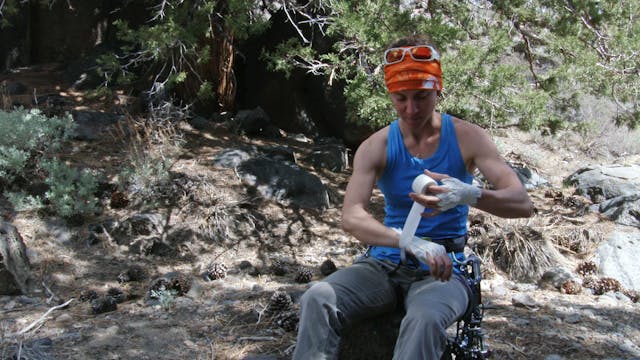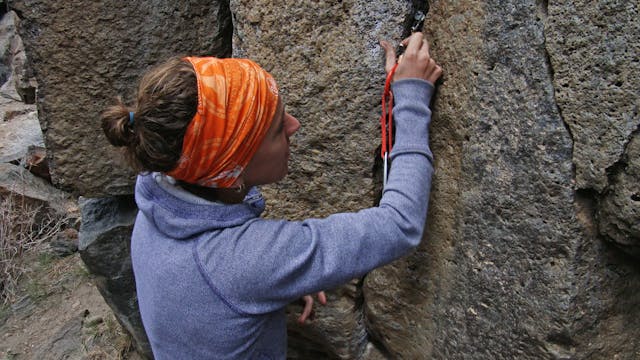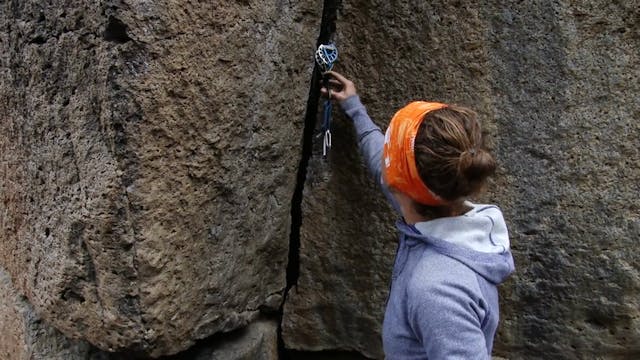Traditional Climbing: 4. Toe Jamming
Traditional Climbing
•
1m 9s
In this video we review considerations when toe or foot jamming to climb a crack. The difference between a toe and foot jam is how far your foot goes in the crack.
To jam your feet or toes in cracks, you use a twisting motion. The torque generates friction between your foot and both sides of the crack which you can use to secure your foot and stand up.
Below are two methods to consider when foot jamming:
Knee outward - With this method, the climber starts by placing their foot into the crack with their knee pointed away from the center line of their body, then rotating the knee back inward to fix the foot in place. This places the pinky toe at the low point, which can create a very solid jam, but also places more pressure on the small toes of the foot.
Knee inward - With this method, the climber starts by placing their foot into the crack with their knee pointed inward, then rotating it outward (in relation to the body’s center line) to lock the foot in place. This puts the big toe at the low point, which may feel less solid, but is often a more comfortable jam.
Often times the orientation of the crack will help dictate which method you choose to use. Most climbers that specialize in crack technique use a more comfortable shoe with increased padding to have the jams feel more comfortable.
We hope you found this video helpful. Feel free to comment below with questions or thoughts!
Please remember, climbing is inherently dangerous. Climb at your own risk.
Up Next in Traditional Climbing
-
Traditional Climbing: 5. Creating Tap...
In this video we review how to create tape gloves for crack climbing. Tape gloves are used to protect the back of your hand when crack climbing. Climbers will typically use tape gloves when crack climbing for multiple consecutive days, especially on rough or sharp rock (i.e. sandstone) in dryer c...
-
Traditional Climbing: 6. Cam Placemen...
In this video we look at how to place and remove cams.
The most important tip for retrieving a cam is also the simplest: first, try to visualize exactly how the cam was placed, then just reverse that motion to get it back out again.
For example, if the cam is placed in a narrow constricted...
-
Traditional Climbing: 7. Cam Placemen...
In this video we review considerations for placing hand-sized cams.
1. Pull the cam’s trigger until the lobes are about 70-80% cammed (100% is when you pull the trigger as far as it will go). If the cam is too small for the crack, we say it is “tipped out” (see video for visual).
2. Look f...


